Our children are faced with a widening range of health issues as they become more sedentary and device orientated. Whether it’s muscle or joint pain, headaches, postural distortions, or obesity— the toll on their wellbeing can be significant.Studies have shown that a staggering 20% to 35% of children and adolescents experience chronic pain. Ongoing physical discomfort can be triggered by an injury or illness, or the cause may remain undiagnosed. Sadly, regularly experiencing pain can reach its uncomfortable tentacles into every aspect of a child’s life. It can affect their school performance, social engagement, and sleep; eventually putting their physical and mental health at risk.
Along with chronic pain, weight is a major health concern for the younger generation. An Australian government report stated that one-quarter of Australian children and adolescents are overweight or obese. In the short-term, carrying excess weight may diminish quality of life. Long-term, obese children and adolescents face a higher risk of developing cardiovascular disease, diabetes, osteoarthritis and certain cancers as adults. The current guidelines for children include 60 minutes of moderate to vigorous physical activity every day and limiting their use of electronic devices and television screen time to no more than two hours a day. These recommendations are rarely followed, with the average 13-year-old spending more than three hours staring at some sort of screen every day. This can contribute to weight gain, poor posture and increased pain. Children also face other modern challenges. Repetitive stress injuries such as “text thumb, text neck and selfie elbow” are now common complaints. Constantly being hunched over a phone screen can reduce breath function. Gazing downward creates stress in the joints of the neck. Back, neck and shoulder pain, and headaches are more common in children who use a computer for two or more hours per day. This includes most, if not all, Australian children. Ah, the joys of technology! Luckily, because of their youth, the impact of these challenges can be reversed with the right care. You can help your child by encouraging regular physical activities that they enjoy, as well as providing a healthy balanced diet. Chiropractors can also play a role in keeping children well. Your chiropractor can provide ergonomic advice to lessen the strain of sitting at a screen. They can assess your child’s spine to determine any joint dysfunction or the presence of scoliosis (abnormal curvature of the spine), and then provide appropriate care and advice.
1 Comment
29/4/2020 0 Comments The Benefits Of Better BreathingWe breathe automatically from birth to death, but rarely stop to consider if we are actually doing it correctly. With upwards of 17,000 breaths per day, correct technique is essential for optimum health.When you inhale deeply, your diaphragm contracts and squashes the contents of your abdomen. This causes your belly to naturally bulge, known as abdominal breathing. On breathing out, your rib cage compresses your lungs and forces air out, and your belly flattens. This rhythmical cycle of contraction and relaxation is essential for breathing and staying well. So how do you know if you’re doing it correctly?
Stop where you are. Sit or stand with your spine straight and your eyes looking forward. Take a deep breath in, and breathe out. Next, hunch the middle of your back and let your shoulders and head slump forward. Now take a deep breath in. Notice the difference? When you slump, your breathing will become shallow, making it impossible to fill your lungs with oxygen and release carbon dioxide properly. When your spine is straight, your rib cage expands and your lungs have adequate space to work fully. The wrong breathing pattern also creates issues in other parts of the body. A hunched posture and shallow breathing can trigger reliance on the secondary muscles of respiration. These are the muscles around your shoulders and neck that can help you breathe, even though they are not designed for this task. This can lead to muscle tightness, pain, postural and joint dysfunction; as well as affect your overall health. Correct abdominal breathing can help lower blood pressure, reduce heart rate, relax muscles, decrease stress, and increase energy levels. Fortunately, we can easily control and improve our breathing. To breathe well, maintain a tall spine. Focus on deep, slow, balanced and controlled breathing through the nose. It should feel easy, and your breath should be silent. Allow ample movement of your chest and note how your abdomen moves in and out. As you do, you’ll trigger the relaxation response, reduce anxiety, and help heal and energise your mind and body. 29/4/2020 0 Comments Magnificent Magnesium!Magnesium is an elemental metal which is essential for life and found in every cell of our bodies.It’s constantly taking part in hundreds of the complex chemical reactions needed to run a healthy body. It helps the body use energy, transmit messages, move muscles, and much more.
Without enough magnesium we can become extremely sick, and a severe deficiency is a medical emergency. Even slightly reduced magnesium levels can affect the human body in a huge variety of ways; however magnesium deficiency is rare in healthy individuals eating a balanced diet. Muscles Magnesium is also essential for muscle function, and some people find that adding magnesium salts to a hot bath helps relieve muscle cramps or restless legs. However it’s not just skeletal muscle that is affected by magnesium levels; the muscle cells of the heart require magnesium both for healthy movement, and for conduction of the electrical impulses that make the heart beat. Bones Magnesium is essential for the health of the skeleton; and around 60 percent of the magnesium in the human body is stored in the bones. It’s required for the proper metabolism and use of calcium and vitamin D in the body, helping create and maintain healthy bone structures. Heart health Magnesium is recommended for all-round heart health too; optimal magnesium intake is linked to lower blood pressure and healthier coronary arteries. Many supplements are available, but it is more beneficial to your health to obtain vitamins and minerals through food. Also, excess intake from supplements can cause serious illness or interact with some prescription medications. Magnesium-rich foods include nuts and seeds, green leafy vegetables, and legumes such as beans. Some prepared foods like breakfast cereals or plant milks also come fortified with magnesium. Adding a sprinkling of roasted nuts or seeds to a meal is a delicious and easy way to get more magnesium into your diet. We often hear about the importance of strong core muscles. But what are they really, what do they do, and how do they help support everyday activities and benefit spinal health?The core is made of numerous muscles that combine to brace the trunk and provide strength and motion. They act as a physical foundation and stabilising force from which all movement can safely occur. Imagine if the footing of your home was faulty — the walls would crack, the doors would jam, and the roof might cave in. In the body, an imbalanced core can trigger strain on joints, tissues and bones, and increase pain, dysfunction and spinal injury.
The rectus abdominus, transversus abdominus and obliques, which together connect the lower rib cage to the pelvis, form the abdominal component. The paraspinal and gluteal muscles sit at the back and support the spine, pelvis and hips. The diaphragm forms the roof, and the pelvic floor forms, well, the floor. Together, these act as a powerhouse of sturdiness, allowing controlled, fluid movement and efficient energy use so your body can work well. By acting as a corset, the core allows us to bend, lift, and reach without falling down like a deck of cards. Any physical activities you do — from standing, walking, housework, participating in sport, to maintaining an ideal posture — all rely on a strong, healthy core. That’s why we struggle when our core is weak. Often people who consult with a chiropractor have diminished core performance. Targeted regular exercises and activities such as yoga and Pilates help to improve core function. Ask your chiropractor which exercises are the most beneficial for you. Picture from Pinterest 29/4/2020 1 Comment Stand Up For Your HealthDo you spend too much time sitting? Are endless hours consumed by the daily commute, being seated at work, and watching your favourite television series?Engaging in regular, moderate or vigorous exercise is an important health recommendation, but new research suggests that it’s not enough. Constant sedentary behaviour — in other words, sitting too much — is a risk factor for serious disease.
Do you ever think you’re too busy to exercise? Leading an inactive lifestyle is common, with work pressures and busy calendars often preventing us from doing regular exercise. Many years ago when survival depended on our ability to farm and hunt for food, strong, powerful and active bodies were essential. Nowadays, adults in Western countries spend approximately nine to eleven hours a day sitting, so the muscles have little reason to move and strengthen. As the saying goes, “use it or lose it.” Lack of movement also leads to an elevated risk of some diseases. When we move less, our arteries can become stiff, which contributes to the development of cardiovascular disease. Lack of physical activity also affects the hormone insulin, making a steady blood sugar level difficult to maintain, which can act as a precursor to diabetes. Various cancers may be attributable to spending more than three hours each day stationary, but the reasons for this are not yet clear, and research is ongoing. Not only does inactivity bring an increased risk of serious illness, but it also affects our weight, muscles, posture and spine. When we are sitting, our hip muscles remain in a shortened position, pulling on the back. This can alter the spinal curves and posture, leading to strain and stress through the discs and joints of the spine. These changes extend upward which can result in back, neck and shoulder pain. The good news To put it simply, the longer we sit the more our health is at risk; but the good news is we can easily prevent this – just move more! Taking simple steps to increase the frequency of movement makes a significant difference. Break up sedentary periods. Stand every 20 to 30 minutes for several minutes of motion. Use a sit-stand desk, or switch your seat for an exercise ball. Structured, regular exercise is an important step, but incidental activity is also essential. Being physically active will loosen tight muscles, improve your posture, calm physical distress, and reduce your risk of disease. A little movement, often, can lead to a longer, healthier life. Ask your chiropractor for tailored advice on the type of exercise and care that best suits your needs. 22/4/2020 2 Comments GETTING IT STRAIGHTSit up straight! This common request may have been how you first heard about posture, the way you hold your body. Posture isn’t just about how you look. How you position yourself can help or hurt your health over your lifetime.Posture is not only about how well you sit, but how well you move and go about your daily life. How you hold yourself when you’re not moving—such as when you’re sitting, standing, or sleeping—is called static posture. Dynamic posture is how you position your body while you’re moving, like walking or bending over to pick something up. It’s important to consider both static and dynamic components of posture.
Posture can be affected by many things: your age, the situations you find yourself in, and your daily choices. For instance, children may have to adjust to carry heavy backpacks to school and pregnant women move differently to accommodate growing babies. Your posture involves your musculoskeletal system. This includes your bones, muscles, joints, and other tissues that connect the parts of your body together. It’s what provides form, support, stability, and movement to your body. How you hold yourself can either align or misalign your musculoskeletal system. Throughout life, this system must adapt to the type of work you do, the hobbies you enjoy, how you use electronic devices, injuries, and even the kind of shoes you wear. You may think that sitting with slumped shoulders or bending at your back instead of your knees sometimes won’t hurt you. But small changes in how you hold yourself and move can add up over a lifetime. Years of slouching wears away at your spine to make it more fragile and prone to injury. Holding your body and moving in unhealthy ways often leads to neck, shoulder, and back pain. Around 1 in 6 Australians have back pain each year. Most are of working age, and an equal number of women and men are affected. Poor posture can also decrease your flexibility, how well your joints move, and your balance. It can impact your ability to do things for yourself and increase your risk for falls. Slumped posture can even make it more difficult to digest the food you eat and breathe comfortably. It’s never too early or late in life to work on improving your posture and how you move. One way to improve your posture is to be aware of it in the first place: be mindful of your posture and how you’re moving. Think about lifting your head, pulling your shoulders back, and tightening your abdominal muscles in everyday situations. Be aware of repetitive postures, like regularly lifting heavy objects, and holding positions for a long time, like sitting at a computer all day at work. The foundation of good posture is having a body that can support it. This means having strong abdominal and back muscles, flexibility, and a balanced body over your life. It’s easy to develop suboptimal movement patterns after an injury or from years of pain, but you can learn to distribute your weight evenly and balance your bodies again. Talk to your chiropractor about your posture. They can give you feedback on how you’re moving, help you avoid unhealthy movement patterns, and work with you to create a plan that’s best for you. Picture from Pinterest This dhal is gorgeous and golden thanks to a generous helping of turmeric. Once the aromas fill the air you’ll find it’s not just a pretty face, but also healthy and delicious. It’s a one pot meal, so it’s a breeze to make and great for lunch, dinner or a side dish.INGREDIENTS
METHOD
Photo from Pinterest 1/4/2020 0 Comments Lounging AroundWhen buying a couch, style and design is important, but finding one that will also help keep your back and spine protected is even more vital.While your soft, low, modern sofa might look beautiful and feel amazing to sink into, it may actually be bad for your health.
So, what should you look for in the structure of a couch to determine if it is right for your back? The key thing is whether it will support your lower back adequately to prevent you from slouching. Sitting in a slouched position, for as little as 10 minutes can result in increased stretching of the spinal ligaments, muscles and spinal discs as well as inciting muscle spasm. This can lead to micro-damage or strain to these soft tissues without you being aware of it. And, while we already know that spending too long sitting down is no good for us in the long-term, how we sit can be just as bad. When you sit on the couch, your knees should bend to a 90o angle and most of your thighs should be supported by the seat. If you curl up with your knees to one side and your spine curved in an S shape; or you slouch, where you sit so far back that your spine is slumped and your feet barely touch the floor you are creating problems for your body. Sitting in either position, over time, builds up the pressure on your discs, muscles and ligaments, increasing the chances of back, neck, hip, knee, shoulder and sciatic pain. It can even lead to digestive problems due to slumping during or straight after a meal causing stomach acid to flow upwards, creating inflammation and discomfort. You don’t have to give up style and fashion in order to get a couch that is also great for your back. Just make sure you shop around and select one that not only looks good, but provides the support that your body needs. Photo From ACA campaign |
AuthorAdam's Back is a team of dedicated complimentary health professionals. Our aim is to support you in finding drug-free solutions for better health. Archives
July 2024
Categories |
Search by typing & pressing enter
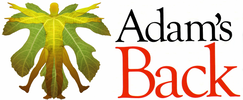

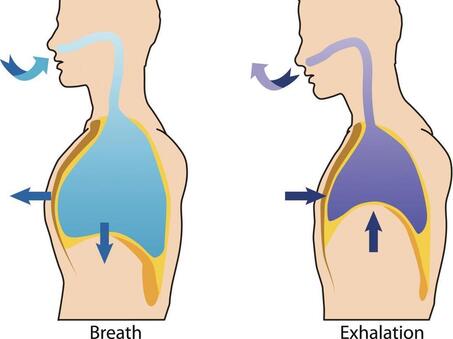
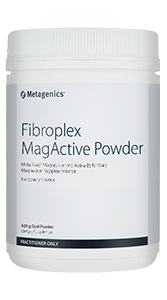
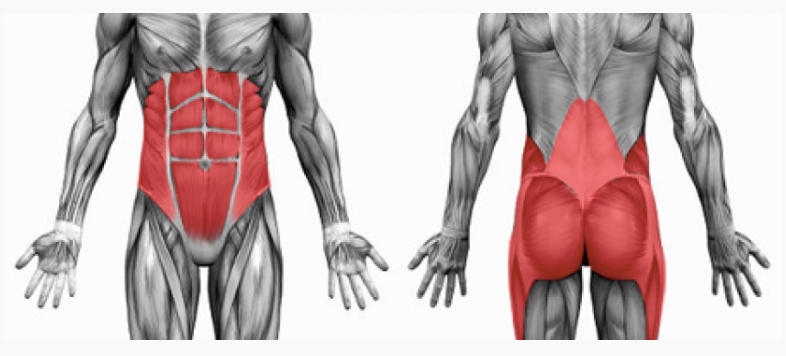

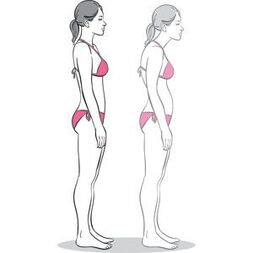


 RSS Feed
RSS Feed